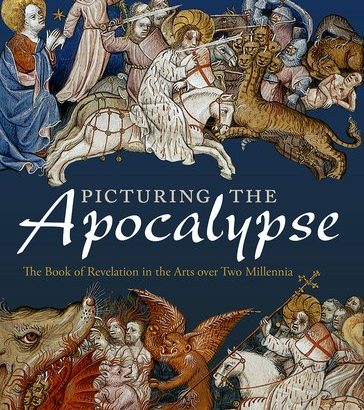Picturing the Apocalypse: The Book of Revelation in the Arts over Two Millennia
by Natasha O’Hear & Anthony O’Hear (Oxford University Press, £12.99)
The other week a false alarm over an incoming ballistic missile (presumably from North Korea and armed with a nuclear warhead) scared the inhabitants of Hawaii witless. Fleeing the beach in minutes, they had visions of the end of the world, of an apocalyptic event which would blow them all to kingdom come.
In the event it was a false alarm, but the fear engendered by the thought of the world’s end and the coming of a final judgement has been part of human culture for much of history.
The early Christians firmly believed that Jesus would return within their lifetime, that the dead would rise from their graves, and that all would undergo a final judgement, weighed in the scales of universal justice.
It was this idea that fed into the writing of the Book of Revelation, the Apocalypse of the old Catholic versions of the Bible. It has been read largely as a vision of a future event, though a few have seen it too as an account of a cataclysmic astronomical event in the past.
That book is certainly a strange piece of writing, quite at odds with the tone and content of the Gospels; it seems to belong to quite another strain of culture and belief. Perhaps it does, owing much to earlier Middle Eastern traditions, rather than the teachings of Jesus.
When the canon of the scriptures was being settled there were those who thought this was one text that should have been excluded. But it was not, and that has made all the difference. The images became part and parcel of a particular strain of Christianity, whose influence has over the centuries waxed and waned.
Such ideas and images are associated in the minds of many with the Protestant tradition, but Catholics cannot really escape its images too. The iconography of statues of the Blessed Virgin found in so many churches are taken direct not from the Gospels, but from the text of John the Divine (Rev. 12:1-2).
It is that kind of imagery, drawn from the text that this wonderful book explores. This is less a book of theological explication than an exploration of the Western imagination since the first century of the Christian era.
The works of art are not taken chronologically, which might have been very confusing. Rather they discuss the material thematically, image by image. The ‘Woman Clothed with the Sun’ is only one of them.
They deal with the Lamb, the Four Horsemen, the opening of the Seven Seals, the Whore of Babylon (for some Protestant of past centuries an image of the Roman Church), Armageddon, the Last Judgement, and the vision of the New Jerusalem – that image of a utopia that remains so powerful in political creeds of Left and Right.
But though the book inevitably has to deal largely with the past, the last chapter discusses how the apocalyptic theme has been handled since 1900, both in art and in popular culture. (An amusing cartoon has one of the Four Horsemen explaining to his companions: “I got bored with the pale horse, so I swapped it for a white van” – a social comment on modern Britain.)
This is an incredibly rich book both in the variety of its illustrations and in the range of allusions explored. But the authors in a refreshing manner want also “to draw the findings of this book together around the two main aims of the book, namely visual exegesis and contemporary relevance”.
They hold that popular non-academic interpretations are often overlooked and treated with contempt by many academics, who, therefore, miss a great deal that is essential to understanding emotions about the Apocalypse.
This is a book which many different kinds of readers will derive much interest and benefit from reading. Given the events in Hawaii and how they have affected some, the vision of St John the Divine remains very relevant indeed to modern life.


 Peter Costello
Peter Costello

